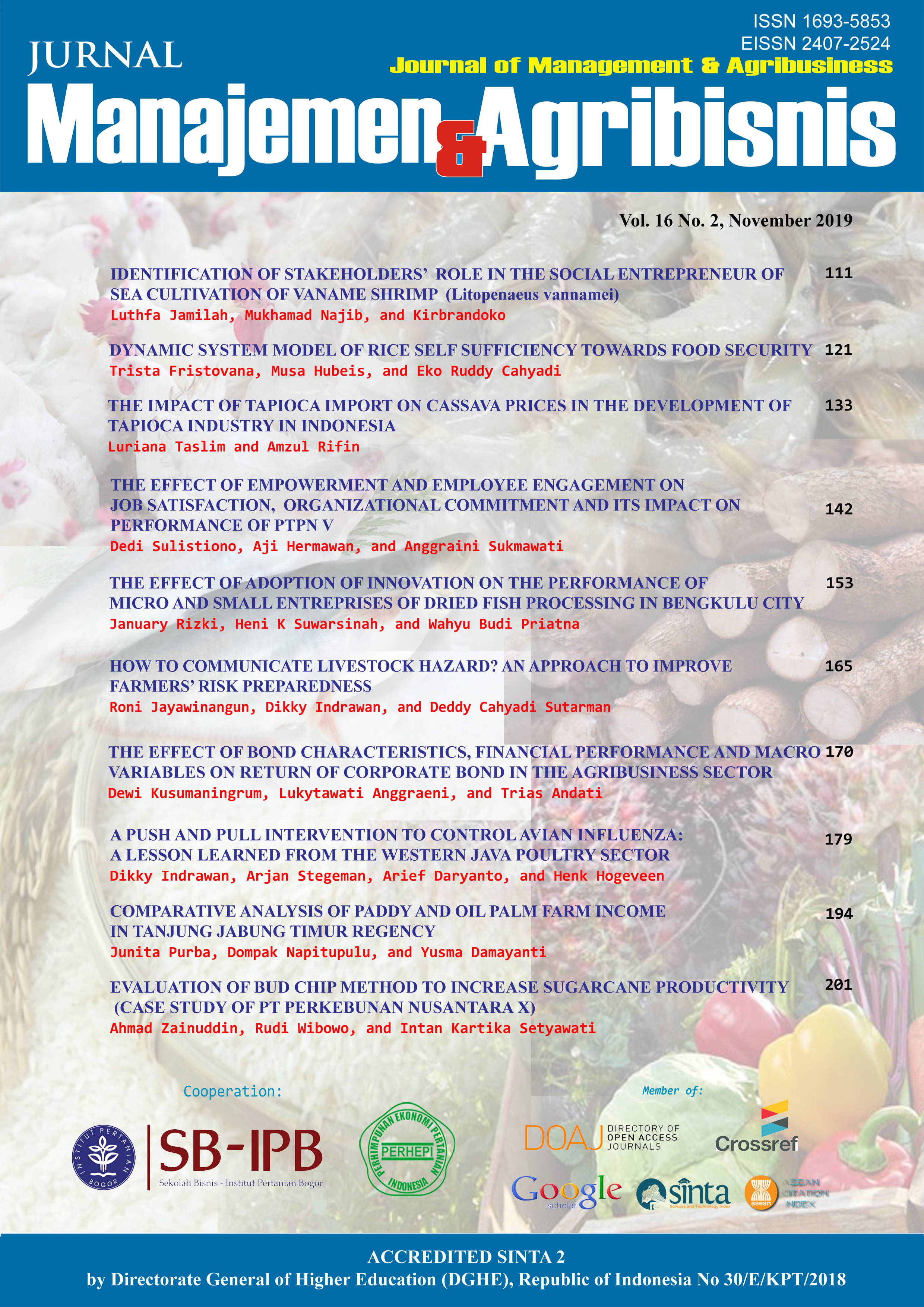A PUSH AND PULL INTERVENTION TO CONTROL AVIAN INFLUENZA: A LESSON LEARNED FROM THE WESTERN JAVA POULTRY SECTOR
Abstract
HPAI H5N1 is considered endemic in Indonesian poultry and poses a major challenge to animal and human health authorities. The complex structure of the Indonesian poultry meat value chain is an important reason for the limited efficacy of HPAI control in Indonesia so far. The paper objective is to describe how to implement a push-and-pull strategy in the poultry supply chain to control HPAI infection in Western Java. More specifically, this study investigates the poultry value chain in Western Java in relation to consumers’ behavior and governance of the value chain. Implementation of biosecurity and HPAI control measures was strongly related to the governance structure of the chain, with interactions that accentuating the risk of HPAI. In conclusion, a push strategy, as an incentive mechanism, should be designed in such a way that it pays attention to the interactions between actors in a value chain and their impact on introduction and transmission of disease. Moreover, a pull strategy as an incentive mechanism for consumers forcing producers to improve their production environment into higher levels of biosecurity is expected to be less effective than a push strategy targeting producers.
Keywords: avian influenza, biosecurity, consumer preferences, willingness to pay, a push and pull strategy
Authors
Authors who publish with this journal agree to the following terms:
- Authors retain copyright and grant the journal right of first publication with the work simultaneously licensed under a Creative Commons Attribution License that allows others to share the work with an acknowledgement of the work's authorship and initial publication in this journal.
- Authors are able to enter into separate, additional contractual arrangements for the non-exclusive distribution of the journal's published version of the work (e.g., post it to an institutional repository or publish it in a book), with an acknowledgement of its initial publication in this journal.
- Authors are permitted and encouraged to post their work online (e.g., in institutional repositories or on their website) prior to and during the submission process, as it can lead to productive exchanges, as well as earlier and greater citation of published work (See The Effect of Open Access).

